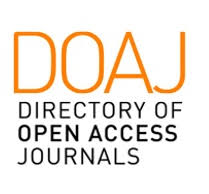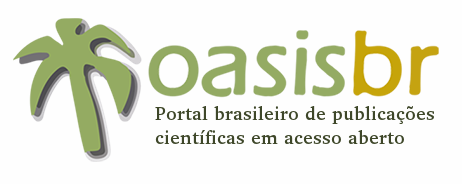USOS E POTENCIALIDADES DAS MEDIDAS DE SUSCETIBILIDADE MAGNÉTICA NOS SOLOS DA AMAZÔNIA: UMA REVISÃO
Resumo
A demanda por métodos alternativos de avaliação qualitativa do solo que auxiliem no planejamento e tomada de decisão agrícola e política tem crescido nas últimas décadas. O alto custo e tempo necessário para levantamentos de campo são entraves que oneram a obtenção de conhecimento para o correto manejo do solo e das culturas agrícolas. Assim, o uso de propriedades magnéticas tem tido destaque no cenário mundial, pois são propriedades inerentes às partículas constituintes dos minerais que compõem o solo, sedimentos e rochas, indicando seu potencial uso como ferramenta pedométrica. A suscetibilidade magnética (SM) do solo, se aplicada para determinada região, tipo de solo ou superfície geomórfica, pode ser utilizada como uma ferramenta pedométrica que facilita a aquisição de informações acerca dos fatores de formação do solo, da própria estimação dos atributos físicos e químicos, ou ainda das mudanças nas propriedades do solo ocorridas pelas constantes conversões da floresta amazonica para cultivos agrícolas. Para isso, técnicas estatísticas multivariadas e geoestatísticas são fundamentais para avaliar a concentração da SM, sua distribuição e variação espacial nos solos do Amazonas, assim como evidenciar a influência das bactérias na formação de minerais magnéticos in-situ. Por isso, medições de SM devem ser incorporadas as tradicionais análises de solo para construção de um banco de dados, para sua posterior calibração como proxie ou como modelos baseados em processos ou em simples correlações. Estes modelos podem ser calibrados não só para a aquisição de conhecimento envolta da ciência do solo, como também de inferências para as ciências geológias e paleo-ambientais.
Texto completo:
PDFReferências
Aidona, E.; Grison, H.; Petrovsky, E. Kazakis, N.; Papadopoulou, L. & Voudouris, K. (2016). Magnetic characteristics and trace elements concentration in soils from Anthemountas River basin (North Greece): Discrimination of different sources of magnetic enhancement. Environment Earth Sciences 75(20):1375.
Allard, D.; Senoussi, R. & Porcu, E. (2015). Anisotropy models for spatial data. Mathematical Geosciences 48(3):305–328.
Almeida, C. X.; Centurion, J. F.; Jorge, R. F.; Barbosa, J. C. & Andrioli, I. (2012). Funções de pedotransferência para a curva de resistência do solo à penetração. Revista Brasileira de Ciência Do Solo 36(6):1745–1755.
Amirian-Chakan, A.; Minasny, B.; Taghizadeh-Mehrjardi, R.; Akbarifazli, R.; Darvishpasand, Z. & Khordehbin, S. (2019). Some practical aspects of predicting texture data in digital soil mapping. Soil and Tillage Research 194:104289.
Ayoubi, S. & Karami, M. (2019). Pedotransfer functions for predicting heavy metals in natural soils using magnetic measures and soil properties. Journal of Geochemical Exploration 197:212–219.
Balsam, W. L.; Ellwood, B. B.; Ji, J.; Williams, E. R.; Long, X. & El Hassani, A. (2011). Magnetic susceptibility as a proxy for rainfall: worldwide data from tropical and temperate climate. Quaternary Science Reviews 30(19-20):2732–2744.
Barrios, M. D. R.; Marques Junior, J.; Matias, S. S. R.; Panosso, A. R.; Siqueira, D. S. & Scala Junior, N. (2017). Magnetic susceptibility as indicator of soil quality in sugarcane fields. Revista Caatinga 30(2):287–295.
Blumentritt, D. J. & Lascu, I. (2015). A comparison of magnetic susceptibility measurement techniques and ferrimagnetic component analysis from recent sediments in Lake Pepin (USA). In: Da Silva, A. C., Whalen, M. T. et al. (eds) Magnetic Susceptibility Application – A Window onto Ancient Environments and Climatic Variations. Geological Society, Special Publications, 414.
Bouma, J. & van Lanen, H. A. J. (1987). Transfer functions and threshold values: from soil characteristics to land qualities. In: Proceedings of the International Workshop on Quantified Land Evaluation Procedures, Washington, DC, USA, 1987 (Washington, 1987), 106–110.
Bouma, J. (1989). Using Soil Survey Data for Quantitative Land Evaluation. Advances in Soil Science 9:177–213.
Bouhsane, N. & Bouhlassa, S. (2018). Assessing magnetic susceptibility profiles of Topsoils under different occupations. International Journal of Geophysics 2018:1-8.
Budrikaitė, L. & Ducinskas, K. (2005). Modelling of geometric anisotropic spatial variation. Mathematical Modelling and Analysis 361–366.
Budrikaitė, L. (2005). Modeling of zonal anisotropic variograms. Lietuvos Matematikos Rinkinys 45:339–342.
Burton, K. W. 2006. Global weathering variations inferred from marine radiogenic isotope records. Journal of Geochemical Exploration 88:262–265.
Calvert, S. E. & Pedersen, T. F. (2007). Elemental proxies for palaeoclimatic and palaeoceanographic variability in marine sediments: interpretation and application. In: Claude, H. M. & Anne De, V. (eds) Developments in Marine Geology 1:567–644.
Camargo, L. A.; Marques Jr, J.; Barrón, V.; Alleoni, L. R. F.; Pereira, G. T.; Teixeira, D. D. B. & Souza Bahia, A. S. R. (2018). Predicting potentially toxic elements in tropical soils from iron oxides, magnetic susceptibility and diffuse reflectance spectra. Catena 165:503–515.
Camargo, L. A.; Marques Jr, J.; Pereira, G. T.; Alleoni, L. R. F.; Bahia, A. S. R. S. & Teixeira, D. D. B. (2016). Pedotransfer functions to assess adsorbed phosphate using iron oxide content and magnetic susceptibility in an Oxisol. Soil Use and Management 32(2):172–182.
Camêlo, D. L.; Carlos Ker, J.; Fontes, M. P. F.; Costa, A. C. S.; Corrêa, M. M. & Leopold, M. (2018). Mineralogy, magnetic susceptibility and geochemistry of Fe-rich Oxisols developed from several parent materials. Scientia Agrícola 75(5):410-419.
Campbell, J. B. (1978). Spatial variation of sand content and pH within single contiguous delineations of two soil mapping units. Soil Science Society of America Journal 42(3):460–464.
Carneiro, M. A. C.; Souza, E. D.; Reis, E. F.; Pereira, H. S. & Azevedo, A. R. (2009). Atributos físicos, químicos e biológicos de solo de cerrado sob diferentes sistemas de uso e manejo. Revista Brasileira de Ciência do Solo 33:147-157.
Carvalho, S. R. L.; Vilas Boas, G. S. & Fadigas, F. S. (2010). Variabilidade espacial de atributos físicos e químicos em solos originados nos sedimentos da formação Barreiras. Cadernos de Geociências 7(2):63-79.
Castellini, M. & Iovino, M. (2019). Pedotransfer functions for estimating soil water retention curve of Sicilian soils. Archives of Agronomy and Soil Science 65(10):1401–1416.
Cherubin, M. R.; Santi, A. L.; Basso, C. J.; Eitelwein, M. T. & Vian, A. L. (2011). Caracterização e estratégias de manejo da variabilidade espacial dos atributos químicos do solo utilizando a análise dos componentes principais. Enciclopédia Biosfera 7(13):196-210.
Cowan, E. A.; Seramur, K. C. & Hageman, S. J. (2013). Magnetic susceptibility measurements to detect coal fly ash from the Kingston Tennessee spill in Watts Bar Reservoir. Environmental Pollution 174:179–188.
Cunha, E. Q.; Stone, L. F.; Ferreira, E. P. B.; Didonet, A. D. & Moreira, J. A. A. (2012). Atributos físicos, químicos e biológicos de solo sob produção orgânica impactados por sistemas de cultivo. Revista Brasileira de Engenharia Agrícola e Ambiental 16(1):56–63.
Dai, Y.; Shangguan, W.; Wei, N.; Xin, Q.; Yuan, H.; Zhang, S. et al. (2019). A review of the global soil property maps for Earth system models. Soil 5(2):137–158.
Dearing, J. A. (1999). Environmental magnetic susceptibility using the Bartington MS2 system. 2nd ed. Kenilworth: Chi Publishing, 54p.
D’Emilio, M.; Macchiato, M.; Ragosta, M. & Simoniello, T. (2012). A method for the integration of satellite vegetation activities observations and magnetic susceptibility measurements for monitoring heavy metals in soil. Journal of Hazardous Materials 241-242:118–126.
Deutsch, C.V. & Journel, A. G. GSLIB: Geostatistical Software Library and user’s guide. New York, Oxford University Press, 1992. 339p.
Devleeschouwer, X.; Petitclerc, E.; Spassov, S. & Préat, A. (2010). The Givetian–Frasnian boundary at Nismes parastratotype (Belgium): the magnetic susceptibility signal controlled by ferromagnetic minerals. In: Silva, A. C. & Boulvain, F. (eds) Magnetic Susceptibility, Correlations and Paleozoic Environments. Geologica Belgica, 13:351–366.
Devleeschouwer, X.; Riquier, L.; Babek, O.; De Vleeshouwer, D.; Petitclerc, E.; Sterckx, S. & Spassov, S. (2015). Magnetization carriers of grey to red deepwater limestones in the GSSP of the Givetian–Frasnian boundary (Puech de la Suque, France): signals influenced by moderate diagenetic overprinting. In: Silva, A. C.; Whalen, M. T. et al. (eds) Magnetic Susceptibility Application – A Window onto Ancient Environments and Climatic Variations. Geological Society, Special Publications, 414.
Dopieralska, J.; Belka, Z. & Haack, U. (2006). Geochemical decoupling of water masses in the Variscan oceanic system during Late Devonian times. Palaeogeography, Palaeoclimatology, Palaeoecology 240:108–119.
Ecker, M. D. & Gelfand, A. (2003). Spatial modeling and prediction under stationary non-geometric range anisotropy. Environmental and Ecological Statistics 10:165-178.
Egli, R. (2003). Analysis of the field dependence of remanent magnetization curves. Journal of Geophysical Research 108:B2-2081.
Ehrenberg, S. N. & Svana, T. A. (2001). Use of spectral gamma-ray signature to interpret stratigraphic surfaces in carbonate strata: an example from the Finn mark carbonate platform (Carboniferous–Permian), Barents Sea. AAPG Bulletin 85(2):295–308.
Ellwood, B. B.; El Hassani, A.; Tomkin, J. H. & Bultynck, P. (2015). A climate-driven model and development of a floating-point timescale for the middle devonian Eifelian stage using time-series analysis of magnetic susceptibility (χ) data set. In: Silva, A. C.; Whalen, M. T. et al. (eds) Magnetic Susceptibility Application – a Window onto Ancient Environments and Climatic Variations. Geological Society, Special Publications, 414.
Font, E.; Trinidade, R. I. F. & Nédélec, A. (2005). Detrital remagnetization in hematite-bearing Neoproterozoic Puga cap dolostone, Amazon craton: a rock magnetic and SEM study. Geophysical Journal International 163:491–500.
Fürst, C.; Lorz, C.; Zirlewagen, D. & Makeschin, F. (2010). Testing the indicative value of magnetic susceptibility measurements for concluding on site potentials and risks provoked by fly ash deposition. Environmental Management 46(6):894–907.
Goebel, M. O.; Krueger, J.; Fleige, H.; Igel, J.; Horn, R. & Bachmann, J. (2017). Frequency dependence of magnetic susceptibility as a proxy for fine-grained iron minerals and aggregate stability of south Chilean volcanic ash soils. Catena 158:46–54.
Golden, N.; Morrison, L.; Gibson, P. J.; Potito, A. P. & Zhang, C. (2015). Spatial patterns of metal contamination and magnetic susceptibility of soils at an urban bonfire site. Applied Geochemistry 52:86–96.
Goovaerts, P. (2000). Estimation or simulation of soil properties? An optimization problem with conflicting criteria. Geoderma 97:165–186.
Grabowski, J.; Narkiewicz, M. & De Vleeschouwer, D. (2015). Forcing factors of the magnetic susceptibility signal in lagoonal and subtidal depositional cycles from the Zachełmie section (Eifelian, Holy Cross Mountains, Poland). In: Silva, A. C.; Whalen, M. T. et al. (eds) Magnetic Susceptibility Application – A Window onto Ancient Environments and Climatic Variations. Geological Society, Special Publications, 414.
Guedes, L. P. C.; Uribe-Opazo, M. A. & Ribeiro Junior, P. J. (2013). Influence of incorporating geometric anisotropy on the construction of thematic maps of simulated data and chemical attributes of soil. Chilean Journal of Agricultural Research 73(4):414–423.
Guedes, L. P. C.; Uribe-Opazo, M. A.; Johann, J. A. & Souza, E. G. (2008). Anisotropia no estudo da variabilidade espacial de algumas variáveis químicas do solo. Revista Brasileira de Ciência do Solo 32(6):2217–2226.
Guedes, L. P. C.; Uribe-Opazo, M. A.; Ribeiro J, P. J.; & Dalposso, G. H. (2018). Relationship between sample design and geometric anisotropy in the preparation of thematic maps of chemical soil attributes. Engenharia Agrícola 38(2):260–269.
Hanesch, M. & Scholger, R. (2002). Mapping of heavy metal loadings in soils by means of magnetic susceptibility measurements. Environmental Geology 42(8):857–870.
Hannam, J. A.; Van Dam, R. L. & Harmon, R. S. (2009). Soil magnetism research: State of the art and future directions. In: Symposium on the Application of Geophysics to Engineering and Environmental Problems 2009:520-526. Society of Exploration Geophysicists.
Hartemink, A. E.; Veldkamp, T. & Bai, Z. (2008). Land cover change and soil fertility decline in tropical regions. Turkish Journal of Agriculture and Forestry 32(3):195–213.
Heider, F.; Zitzelsberger, A. & Fabian, K. (1996). Magnetic susceptibility and remanent coercive force in grown magnetite crystals from 0.1 mm to 6 mm. Physical Earth Planetary International 93:239–256.
Henrion, R. & Henrion, G. (2001). Chemometrics. In: Günzler, H. & Williams, A. Handbook of Analytical Techniques. Wiley-VCH, 37–61.
Hladil, J.; Koptíková, L.; Galle, A.; Sedláček, V.; Pruner, P.; Schnabl, P.; Langrová, A. et al. (2009). Early Middle Frasnian platform reef strata in the Moravian Karst interpreted as recording the atmospheric dust changes: the key to understanding perturbations in the punctata conodont zone. Bulletin of Geosciences 84(1):75–106.
Isaaks, E. H. & Srivastava R. M. (1989). An introduction to applied geostatistics. New York, Oxford University Press, 560p.
Jackson, M.; Rochette, P.; Fillion, G.; Banerjee, S. & Marvin, J. (1993). Rock magnetism of remagnetized Palaeozoic carbonates: low-temperature behavior and susceptibility characteristics. Journal of Geophysical Research 98:6217–6225.
Journel, A. G. & Huijbregts, C. H. (1978). Mining Geostatistics. Academic Press, New York.
Khaledian, Y.; Brevik, E. C.; Pereira, P.; Cerdà, A.; Fattah, M. A. & Tazikeh, H. (2017). Modeling soil cation exchange capacity in multiple countries. Catena 158:194–200.
Khaledian, Y.; Quinton, J. N.; Brevik, E. C.; Pereira, P. & Zeraatpisheh, M. (2018). Developing global pedotransfer functions to estimate available soil phosphorus. Science of the Total Environment 644:1110–1116.
Kitagawa, Y. & Möller, M. R. F. (1980). Kaolin minerals in the Amazon soils. Soil Science and Plant Nutrition 26(2):255-269.
Koptíková, L.; Bábek, O.; Hladil, J.; Kalvoda, J. & Slavík, L. (2010). Stratigraphic significance and resolution of spectral reflectance logs in Lower Devonian carbonates of the Barrandian area, Czech Republic; a correlation with magnetic susceptibility and gamma-ray logs. Sedimentary Geology 225:83–98.
Kozłowski, W. & Sobien, K. (2012). Mid-Ludfordian coeval carbon isotope, natural gamma ray and magnetic susceptibility excursions in the Mielnik IG-1 borehole (Eastern Poland) – dustiness as a possible link between global climate and the Silurian carbon isotope record. Palaeogeography, Palaeoclimatology, Palaeoecology 339–341:74–97.
Kruiver, P. P.; Dekkers, M. J. & Heslop, D. (2001). Quantification of magnetic coercivity components by the analysis of acquisition curves of isothermal remanent magnetization. Earth and Planetary Science Letters 189(3-4):269–276.
Lima, L. D. S.; Neumann, M. B.; Braga, A. D. S. & Roig, H. (2013). Mapeamento de Solos: do tradicional ao digital. Embrapa Cerrados-Documentos.
Liu, L.; Zhang, K.; Zhang, Z. & Qiu, Q. (2015). Identifying soil redistribution patterns by magnetic susceptibility on the black soil farmland in Northeast China. Catena 129:103–111.
Liu, Q.; Roberts, A. P.; Larrasoaña, J. C.; Banerjee, S. K.; Guyodo, Y.; Tauxe, L. & Oldfield, F. (2012). Environmental magnetism: Principles and applications. Reviews of Geophysics 50:4002.
Lorena, V. (2005). Análise multivariada da teoria à prática [Dissertação]. Universidade Federal de Santa Maria – RS, 215p.
Lourente, E. R. P.; Mercante, F. M.; Alovisi, A. M. T.; Gomes, C. F. G.; Gasparini, A. S. & Nunes, C. M. (2011). Atributos microbiológicos, químicos e físicos de solo sob diferentes sistemas de manejo e condições de cerrado. Pesquisa Agropecuária Tropical 41(1):20-28.
Lukens, W. E.; Nordt, L. C.; Stinchcomb, G. E.; Driese, S. G. & Tubbs, J. D. (2018). Reconstructing pH of Paleosols using geochemical proxies. The Journal of Geology 126(4):427–449.
Mabille, C. & Boulvain, F. (2008). Les Monts de Baileux section: detailed sedimentology and magnetic susceptibility of Hanonet, Trois-Fontaines and Terres d’Haurs Formation (Eifelian/Givetian boundary and Lower Givetian, SW Belgium). Geologica Belgica 11:93–121.
Maeda, E. E.; Formaggio, A. R. & Shimabukuro, Y. E. (2008). Impacts of land use and land cover changes on sediment yield in a Brazilian Amazon drainage basin. GIScience & Remote Sensing 45(4):443–453.
Maher, B. A. (1986). Characterization of soils by mineral magnetic measurements. Physics of the Earth and Planetary Interiors 42:76-91.
Maher, B. A. (1988). Magnetic properties of some synthetic submicron magnetites. Geophysical Journal 94:83–96.
Maia, M. A. M. & Marmos, J. L. (2010). Geodiversidade do estado do Amazonas. Manaus: CPRM. 275p.
Malki, M.; González-Toril, E.; Sanz, J. L.; Gómez, F.; Rodríguez, N. & Amils, R. (2006). Importance of the iron cycle in biohydrometallurgy. Hydrometallurgy 83:223–228.
Matheron, G. (1963). Principles of geostatistics. Economic Geology 58(8):1246-1266.
Matheron, G. (1971). The theory of regionalized variables and its applications. Paris, Les Cahiers du Centre de Morphologie Mathematique de Fontainebleu, 211p.
McBratney, A. B.; Minasny, B.; Cattle, S. R. & Vervoort, R. W. (2002). From pedotransfer functions to soil inference systems. Geoderma 109(1-2):41–73.
McBratney, A. B.; Odeh, I. O. A.; Bishop, T. F. A.; Dunbar, M. S. & Shatar, T. M. (2000). An overview of pedometric techniques for use in soil survey. Geoderma 97:293-327.
McBratney, A. G.; Santos, M. L. & Minasny, B. (2003). On digital soil mapping. Geoderma 117(1-2):3-52.
Melo, T. R.; Machado, W.; Oliveira, J. F. & Tavares Filho, J. (2018). Predicting aggregate stability index in Ferralsols. Soil Use and Management 34(4):545–553.
Mewafy, F. M.; Atekwana, E. A.; Werkema Jr, D. D.; Slater, L. D.; Ntarlagiannis, D.; Revil, A.; Skold, M. & Delin, G. N. (2011). Magnetic susceptibility as a proxy for investigating microbially mediated iron reduction. Geophysical Research Letters 38(21).
Mewafy, F. M.; Atekwana, E. A.; Werkema Jr, D. D.; Slater, L. D.; Ntarlagiannis, D.; Revil, A.; Skold, M. & Delin, G. N. (2011). Magnetic susceptibility as a proxy for investigating microbially mediated iron reduction. Geophysical Research Letters 38(21).
Minasny, B. & Hartemink, A. E. (2011). Predicting soil properties in the tropics. Earth-Science Reviews 106(1-2):52–62.
Mwango, S. B.; Wickama, J.; Msanya, B. M.; Kimaro, D. N.; Mbogoni, J. D. & Meliyo, J. L. (2019). The use of pedotransfer functions for estimating soil organic carbon contents in maize cropland ecosystem in the Coastal Plains of Tanzania. Catena 172:163–169.
Nascimento, C. W. A.; Lima, L. H. V.; Silva, F. L.; Biondi, C. M. & Campos, M. C. C. (2018). Natural concentrations and reference values of heavy metals in sedimentary soils in the Brazilian Amazon. Environmental Monitoring and Assessment 190(10):606.
Oliveira, I. A.; Marques Junior, J.; Campos, M. C. C.; Aquino, R. E.; Freitas, L.; Siqueira, D. S. & Cunha, J. M. (2015). Variabilidade espacial e densidade amostral da suscetibilidade magnética e dos atributos de Argissolos da Região de Manicoré, AM. Revista Brasileira de Ciência do Solo 39(3):668–681.
Oliveira, I. A.; Marques Júnior, J.; Campos, M. C. C.; Aquino, R. E.; Freitas, L. & Ferraudo, A. S. (2017). Multivariate technique for determination of soil pedoenvironmental indicators in Southern Amazonas. Acta Scientiarum. Agronomy 39(1):99–108.
Ostovari, Y.; Ghorbani-Dashtaki, S.; Kumar, L. & Shabani, F. (2019). Soil erodibility and its prediction in semi-arid regions. Archives of Agronomy and Soil Science 65(12):1688–1703.
Pachepsky, Y. A. & van Genuchten, M. T. (2011). Pedotransfer Functions. Encyclopedia of Earth Sciences Series 556–561.
Peluco, R. G.; Marques Jr, J.; Siqueira, D. S.; Cortez, L. A.; Pereira, G. T. (2013). Magnetic susceptibility in the prediction of soil attributes in two sugarcane harvesting management systems. Engenharia Agrícola 33(6):1134-1143.
Peters, C. & Dekkers, M. J. (2003). Selected room temperature magnetic parameters as a function of mineralogy, concentration and grain size. Physics and Chemistry of the Earth 28(16-19):659–667.
Pham, K.; Kim, D.; Yoon, Y. & Choi, H. (2019). Analysis of neural network based pedotransfer function for predicting soil water characteristic curve. Geoderma 351:92–102.
Pringle, J. K.; Giubertoni, M.; Cassidy, N. J.; Wisniewski, K. D.; Hansen, J. D.; Linford, N. T. & Daniels, R. M. (2015). The use of magnetic susceptibility as a forensic search tool. Forensic Science International 246:31–42.
Qiao, J.; Zhu, Y.; Jia, X.; Huang, L. & Shao, M. (2018). Development of pedotransfer functions for predicting the bulk density in the critical zone on the Loess Plateau, China. Journal of Soils and Sediments 19(1):366–372.
Ramos, P. V.; Dalmolin, R. S. D.; Marques Júnior, J.; Siqueira, D. S.; Almeida, J. A. D. & Moura-Bueno, J. M. (2017). Magnetic susceptibility of soil to differentiate soil environments in southern Brazil. Revista Brasileira de Ciência do Solo 41:e0160189.
Ramos, P. V. (2015). Suscetibilidade magnética na estimativa de atributos do solo e identificação de compartimentos da paisagem em Latossolos de basalto no planalto do RS [Dissertação]. Universidade Federal de Santa Maria – RS, 82p.
Resende, M.; Santana, D. P.; Franzmeier, D. P. & Coey, J. M. D. (1988). Magnetic properties of Brazilian Oxisols. In 8 International Soil Classification Workshop. Brasília: Embrapa-SNLCS/USDA-SCS/SMSS, 285p. Part 1: Papers, 78-108.
Riquier, L.; Averbuch, O.; Devleeschouwer, X. & Tribovillard, N. (2010). Diagenetic v. detrital origin of the magnetic susceptibility variations in some carbonate Frasnian-Famennian boundary sections from Northern Africa and Western Europe: implications for paleo environmental reconstructions. International Journal of Earth Sciences 99:57–73.
Rocha Junior, P. R.; Donagemma, G. K.; Andrade, F. V.; Passos, R. R.; Balieiro, F. C.; Mendonça, E. S. & Ruiz, H. A. (2014). Can soil organic carbon pools indicate the degradation levels of pastures in the Atlantic forest biome? Journal of Agricultural Science 6(1):84-95.
Santi, A. L.; Amado, T. J. C.; Cherubin, M. R.; Martin, T. N.; Pires, J. L.; Flora, L. P. D.; & Basso, C. J. (2012). Análise de componentes principais de atributos químicos e físicos do solo limitantes à produtividade de grãos. Pesquisa agropecuária brasileira 47(9):1346-1357.
Schaap, M. G. (2004). Accuracy and uncertainty in PTF predictions. Developments in Soil Science 33–43.
Schabes, M. E. & Bertram, H. N. (1988). Magnetization processes in ferromagnetic cubes. Journal Applied Physics 64:1347.
Schaefer, C. E. G. R.; Lima, H. N.; Teixeira, W. G.; Vale Jr, J. R.; Souza, K. W.; Corrêa, G. R.; Mendonça, B. A. F. et al. (2017). Solos da Região Amazônica. In: Curi N.; Ker, J.C.; Novais, R.F.; Vidal-Torrado, P.; Schaefer, C. E. G. R. (editores). Pedologia - Solos dos Biomas Brasileiros. Viçosa, MG: Sociedade Brasileira de Ciência do Solo.
Shein, E. V.; & Arkhangel’skaya, T. A. (2006). Pedotransfer functions: State of the art, problems, and outlooks. Eurasian Soil Science 39(10):1089–1099.
Silva Junior, C. A.; Boechat, C. L. & Carvalho, L. A. (2012). Change in soil fertility in Amazonian forest conversion for different systems in the northern state of Para, Brazil. Bioscience Journal 28(4):566–572.
Silva, A. C.; Whalen, M. T.; Hladil, J.; Chadimova, L.; Chen, D.; Spassov, S.; Boulvain, F. et al. (2015). Magnetic susceptibility application: a window onto ancient environments and climatic variations: foreword. Geological Society, Special Publications, 414:1–13.
Siqueira, D. S. (2010). Suscetibilidade magnética para a estimativa de atributos do solo e mapeamento de áreas sob cultivo de cana-de-açúcar [Dissertação]. Universidade Estadual Paulista – Jaboticabal, 75p.
Siqueira, D. S.; Marques Jr, J.; Matias, S. S. R.; Barrón, V.; Torrent, J.; Baffa, O. & Oliveira, L. C. (2010b). Correlation of properties of Brazilian Haplustalfs with magnetic susceptibility measurements. Soil Use and Management 26(4):425–431.
Siqueira, D. S.; Marques Jr, J.; Pereira, G. T.; Teixeira, D. B.; Vasconcelos, V.; Carvalho Jr, O. A. & Martins, E. S. (2015). Detailed mapping unit design based on soil–landscape relation and spatial variability of magnetic susceptibility and soil color. Catena 135:149–162.
Souza, F. G.; Campos, M. C. C.; Brito Filho, E. G.; Cunha, J. M.; Lima, A. F. L.; Sales, M. C. G. & Santos, L. A. C. (2019). Physical attributes of soil under amazon forest conversion for different crop systems in southern Amazonas, Brazil. Canadian Journal of Soil Science 99(4):563–574.
Souza, Z. M.; Silva, M. L. S.; Guimarães, G. L.; Campos, D. T. S.; Carvalho, M. P. & Pereira, G. T. (2001). Variabilidade espacial de atributos físicos em um Latossolo Vermelho distrófico sob semeadura direta em Selvíria (MS). Revista Brasileira de Ciência do Solo 25(3):699-707.
Tauxe, L. (2010). Essentials of Paleomagnetism, Univ. of Calif. Press, Berkeley.
Thompson, R. & Oldfield, F. (1986). Environmental magnetism.
Till, J. L.; Jackson, M. J.; Rosenbaum, J. G.; & Solheid, P. (2011). Magnetic properties in an ash flow tuff with continuous grain size variation: A natural reference for magnetic particle granulometry. Geochemistry, Geophysics, Geosystems 12(7):1-10.
Trangmar, B. B.; Yost, R. S. & Uehara, G. (1985). Application of geostatistics to spatial studies of soil properties. Advances in Agronomy 38:45-94.
Tribovillard, N.; Algeo, T. J.; Lyons, T. & Riboulleau, A. (2006). Trace metals as paleoredox and paleoproductivity proxies: An update. Chemical Geology 232:12–32.
Valeriano, M. M. & Prado, H. (2001). Técnicas de geoprocessamento e de amostragem para o mapeamento de atributos anisotrópicos do solo. Revista Brasileira de Ciência do Solo 25(4):997–1005.
Vieira, S. R.; Nielsen, D. R. & Biggar, J. W. (1981). Spatial variability of field-measured infiltration rate. Soil Science Society of America Journal 45(6):1040–1048.
Wang, B.; Xia, D.; Yu, Y.; Jia, J. & Xu, S. (2014). Detection and differentiation of pollution in urban surface soils using magnetic properties in arid and semi-arid regions of northwestern China. Environmental Pollution 184:335–346.
Webster, R. & Oliver, M. A. (2007). Geostatistics for environmental scientists. Statistics in practice. 2nd edition, John Wiley & Sons, Ltd.
Webster, R. (2000). Is soil variation random? Geoderma 97:149–163.
Williams, W. & Dunlop, D. J. (1989). Three-dimensional micromagnetic modelling of ferromagnetic domain structure. Nature 337:634–637.
Williams, W. & Dunlop, D. J. (1995). Simulation of magnetic hysteresis in pseudo-single-domain grains of magnetite. Journal Geophysical Research 100:3859–3871.
Worm, H. U. (1998). On the superparamagnetic-stable single domain transition for magnetite, and frequency dependence of susceptibility. Geophysical Journal International 133(1):201–206.
Zenero, M. D. O.; Silva, L. F. S.; Castilho, S. C. P.; Vidal, A.; Grimaldi, M. & Cooper, M. (2016). Characterization and classification of soils under forest and pasture in an agroextractivist project in eastern Amazonia. Revista Brasileira de Ciência do Solo 40:e0160165.
Zhou, L. P.; Oldfield, F.; Wintle, A. G.; Robinson, S. G. & Wang, J. T. (1990). Partly pedogenic origin of magnetic variations in Chinese loess. Nature 346:737–739.
Zimmermann, B.; Elsenbeer, H. & Moraes, J. M. (2006). The influence of land-use changes on soil hydraulic properties: implications for runoff generation. Forest ecology and management 222(1-3):29–38.
DOI: https://doi.org/10.22408/reva702022741e-7019
Métricas do artigo
Metrics powered by PLOS ALM
Apontamentos
- Não há apontamentos.












